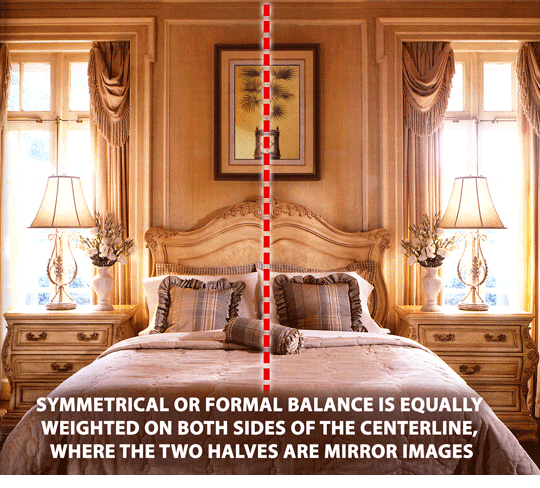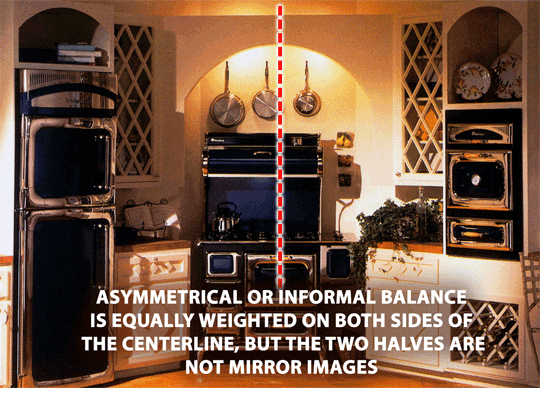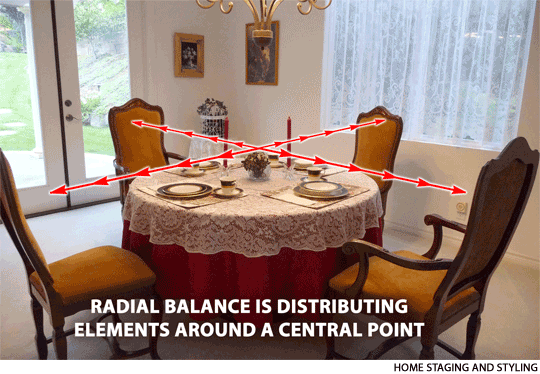|
|
|
|
|
|
|
|
|
|
|
|
|
|
|
|
|
|
|
|
|
|
|
|
|
|
|
|
|
|
|
|
|
|
Article Nine: Principles of Design 101B - Balance Part 2
|
|
|
|
|
|
Did you experience nature's balanced sensations outside and then compared that to the feelings received inside your home? There are three types of balance, which we will examine today. Thanks to math and physics, they have commanding names - symmetrical balance, asymmetrical balance and radial balance. We'll review balance briefly and then examine the three different types.
|
|
|
|
|
|
- Balance expresses our impression of how visual weight is distributed throughout a room. We instinctively seek stability and equilibrium, which balance gives us.
- Symmetrical is formal balance. When you are creating a symmetrical arrangement, first determine the centerline of the design area and then create mirror images of the two sides. There is room for slight variations on each side, as long as the sides are equally weighted. Symmetry is commonly found among animals and plants - the human face, butterfly wings and French doors are common examples. Symmetry exemplifies order and grace and was celebrated in classical architecture. We appreciate it in elegant settings such as formal gardens and grand buildings. It tends to feel more still and less dynamic than the other types of balance.
|
|
|
|
|
|
|
 |
|
|
|
|
|
|
|
|
|
|
|
- Asymmetrical or informal balance is also equally weighted on either side of the centerline, but the two halves are not mirror images. It is more dynamic and relaxed than symmetry. We still sense order and stability, but the display feels more active than a symmetrical arrangement would. For equilibrium, heavier-weighted objects are placed closer to the centerline and lighter-weighted objects are moved farther away. Asymmetrical rooms allow you to use a greater range of shapes and sizes in the design. This type of balance lends itself remarkably well to casual and unusual styles.
|
|
|
|
|
|
|
|
|
 |
|
|
|
|
|
|
|
|
|
|
|
- Radial balance is distributing elements around a central point as found in the daisy. We see this in arrangements that center about a round table, as in dining rooms or as in large foyers and decks outside.
|
|
|
|
|
|
|
|
|
|
|
 |
|
|
|
|
|
|
|
|
|
|
|
|
You can mix different types of balance, especially in large or open-concept rooms that have different regions. In a living-dining room, for example, the dining area could be radially balanced around the table, while the living section could be symmetrically balanced around the fireplace.
Train your eyes in identifying the different types of balance in your home today.
|
|
|
|
|
|
|
|
|
|
|
|
|
|
 |
|
|
|
|
|
|
|
|
|
Until next time, happy Home Staging and Styling.
|
|
© 2021 |
|
|
|
|
|
|
|
|
|
|
|
|
|
|
|
|
|
|




